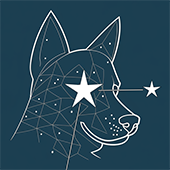A Note from the Developer of SkyTools
It has been a long journey since the first version of SkyTools appeared in 1998. I recall another astronomy software product from those days. The developers had said that they couldn't think of anything more to add to it. My thought, upon hearing this, was that I didn't think I could ever run out of new ideas, and especially ways to make improvements. I enjoyed that software, but like many others from that time, it is a distant memory.
I started SkyTools with a lofty vision where I imagined Captain Picard from Star Trek asking the computer for assistance with his telescope. My early attempts at making that vision come true were mostly kludges, but it did work well enough to be useful. Ultimately building a better system based on modeling the contrast seen by the human eye at the eyepiece was trying, difficult work, but it now exceeds that original vision. I take great satisfaction in the knowledge that countless observers, both beginners and advanced, have seen objects in the eyepiece that they would not have without SkyTools.
Once Visual Observing had reached maturity in SkyTools, it was time to take on the imaging part of the hobby. SkyTools Imaging was the most challenging project of my career. It required an entirely new product that is unlike anything else. It not only successfully calculates the Signal to Noise ratio on the detector, but leverages that information at every step, from selecting targets, to the most efficient image capture possible. Weirdly, in the end, the most difficult part isn't developing the software, but getting the word out to people about it. I am still working on that.
Looking back, the challenge has always been to stay relevant as trends come and go. From the CCD revolution, to CMOS, or small refractors to Big Dobs, and more recently to Electronic Assisted Astronomy (EAA). The one thing that has remained constant throughout these years is that many people spend a lot of money on the hobby, learn the techniques, and then are left wondering what to do with it all. The role of SkyTools has always been to fill that gap, whether it be to help observers go deeper for those obscure faint planetary nebulae, or get an amazing narrow band image of a less well known nebula. And now it's time to take the next step—to help people get more out of their EAA setup.
To that end, I am currently busy working on the new SkyTools Visual & EAA project. This will bridge the gap between the workflow of SkyTools Visual and the technology of SkyTools Imaging, by folding it into SkyTools Visual Professional Edition. It's ironic, that after removing all of the imaging support from SkyTools Visual, I am now putting some of it back.
I am certain that this is not the end of amateur astronomy. New technology will come along and new trends will appear, and SkyTools will continue to expand and adapt.
So here's to the future of amateur astronomy and SkyTools!
Sign up for my monthly newsletter for exclusive updates.
Clear skies,
Greg
